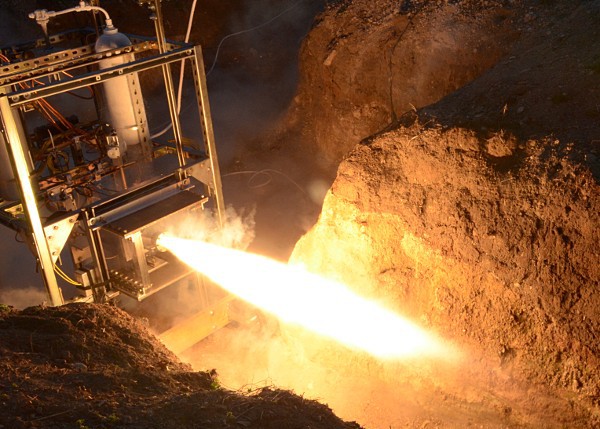Robert’s Rocket Project has been going on for a long time. It has been around so long that you can go all the way back to posts from 2001, where he talks about getting his first digital camera! The site is dedicated to his pursuit of liquid fueled rocket engine building. It’s a great project log and he has finally come to the point where he will be testing his first flight vehicle soon.
His latest project is a 250lbf regeneratively cooled engine. It uses kerosene as the fuel, and liquid oxygen as the oxidizer. The neat thing is he utilizes the temperature change of the liquid oxygen expanding to cool the chamber and nozzle before being burned. This allows for a very efficient and powerful combustion of the fuel. He has some videos of testing it on his site, we just wonder why he doesn’t host them on YouTube or something…
Anyhow, there’s more than enough info on his site to try and recreate some of his experiments, but perhaps you should start here instead: How to Design, Build and Test Small Liquid-Fuel Rocket Engines.
[Thanks Ray!]












